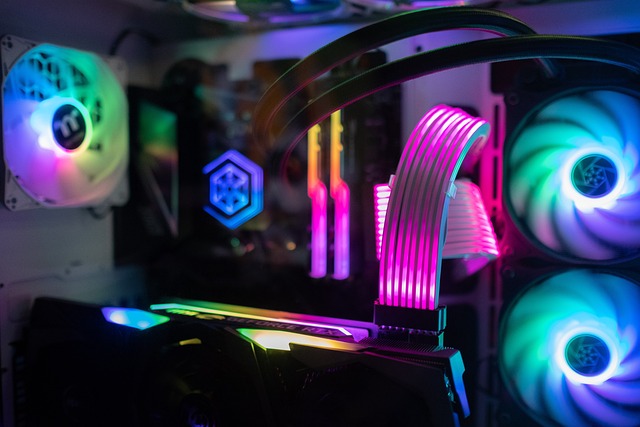
In today’s digital age, computers are an integral part of our daily lives, whether for work, entertainment, or communication. Over time, however, even the fastest machines can begin to slow down, making tasks that were once instantaneous feel frustratingly sluggish. A slow computer can decrease productivity and overall enjoyment. Fortunately, there are numerous ways to speed up your computer, many of which don’t require advanced technical knowledge. This article will explore some of the best tips and tricks to boost your computer’s performance, offering both quick fixes and long-term solutions.
1. Free Up Disk Space
a. Remove Unnecessary Files
One of the most common reasons for a slow computer is a lack of available storage space. Over time, computers accumulate temporary files, downloads, and redundant applications that take up space. A good starting point is to clean up your disk by deleting unnecessary files.
To begin:
- Empty your Recycle Bin: Files in the Recycle Bin continue to take up space on your hard drive until they are permanently deleted.
- Clear temporary files: Operating systems like Windows create temporary files that can be safely removed. You can do this by accessing Disk Cleanup (Windows) or by using a tool like CleanMyMac for Mac users.
- Uninstall unused programs: Regularly evaluate the applications installed on your machine. If you haven’t used a program in several months, consider uninstalling it.
b. Defragment Your Hard Drive
If you are using a traditional hard drive (HDD), defragmentation can significantly improve performance. Defragmentation reorganizes scattered data, allowing your computer to access it more efficiently. To defragment your drive:
- On Windows, use the built-in Defragment and Optimize Drives tool.
- On Mac, defragmentation is usually unnecessary, but if performance issues persist, you can use third-party tools like iDefrag.
For users with a solid-state drive (SSD), defragmentation is not required and can even shorten the lifespan of the drive.
2. Manage Startup Programs
When your computer starts up, it may launch several programs that run in the background, consuming valuable system resources. Reducing the number of startup programs can significantly speed up your boot time and overall performance.
To manage startup programs:
- On Windows, press
Ctrl + Shift + Escto open Task Manager. Navigate to the “Startup” tab and disable programs that you don’t need to run at startup. - On Mac, go to System Preferences > Users & Groups > Login Items, and remove any unnecessary startup items.
This step alone can make your system feel noticeably faster from the moment you turn it on.
3. Upgrade Your Hardware
a. Add More RAM
If your computer is still sluggish despite software optimizations, upgrading the hardware might be the next step. Random Access Memory (RAM) plays a crucial role in multitasking and running memory-intensive applications. If your computer has less than 8 GB of RAM, upgrading to 8 GB or even 16 GB can significantly enhance performance.
To check if you need more RAM:
- On Windows, open Task Manager and go to the “Performance” tab. If your memory usage frequently exceeds 80%, more RAM will likely improve performance.
- On Mac, open Activity Monitor and check the “Memory” tab for similar insights.
b. Upgrade to a Solid-State Drive (SSD)
One of the most transformative upgrades you can make to your computer is replacing a traditional HDD with an SSD. SSDs are much faster than HDDs, providing quicker boot times, faster file access, and an overall smoother experience.
SSDs are especially beneficial for older computers that may be bottlenecked by a slow hard drive. Upgrading to an SSD can give an aging machine a new lease on life, making it feel brand new again.
4. Keep Software Updated
a. Operating System Updates
Operating system (OS) updates often include important performance improvements, security patches, and bug fixes. Keeping your OS up to date ensures that your computer is running efficiently and securely.
- On Windows, navigate to Settings > Update & Security > Windows Update to check for available updates.
- On Mac, go to System Preferences > Software Update to download and install the latest version of macOS.
b. Update Drivers and Applications
Outdated drivers and software can cause compatibility issues and slow down your computer. Regularly check for updates to your device drivers (especially graphics, sound, and network drivers) as well as installed applications.
Driver update tools like Driver Booster or Snappy Driver Installer can simplify this process for Windows users, while Mac users can rely on Apple’s built-in update system to keep drivers up to date.
5. Use Antivirus Software and Perform Regular Scans
Malware, viruses, and other malicious software can severely impact your computer’s performance. Installing reputable antivirus software and performing regular system scans will help identify and remove threats that may be slowing your machine down.
Some of the most reliable antivirus programs include:
- Bitdefender
- Kaspersky
- Norton
Ensure that your antivirus software is always updated to detect the latest threats and schedule weekly scans to keep your computer free from malware.
6. Adjust Visual Effects and Settings
While modern operating systems often come with visually appealing animations and effects, these features can consume a lot of system resources. Disabling or reducing visual effects can provide a noticeable performance boost, especially on older computers.
To adjust visual effects:
- On Windows, go to Control Panel > System > Advanced System Settings > Settings (under Performance), and select “Adjust for best performance.”
- On Mac, disable transparency effects by going to System Preferences > Accessibility > Display, and check the box for “Reduce Transparency.”
This step will help free up resources for more essential tasks.
7. Clear Your Browser Cache
Web browsers are notorious for consuming memory, especially when multiple tabs are open. Clearing your browser cache, cookies, and browsing history can improve both browsing speed and overall system performance.
Most modern browsers, including Chrome, Firefox, and Safari, have built-in tools to clear cache:
- In Google Chrome, click on the three dots in the upper-right corner, select More Tools, and then click Clear Browsing Data.
- In Safari, go to Safari > Preferences > Privacy, and click Manage Website Data to clear your cache.
If you frequently use your browser for extended periods, closing unused tabs or switching to a lightweight browser can also enhance system performance.
8. Perform a System Reset
If none of the above tips yield significant results, it may be time to consider resetting your computer to its factory settings. This is a more drastic measure, but it can remove any lingering software issues, malware, or unwanted programs that are slowing down your machine.
Before resetting your computer, ensure you have backed up all important files and data. After a system reset, your computer will be restored to its default state, typically resolving any performance issues.
To perform a reset:
- On Windows, go to Settings > Update & Security > Recovery, and select “Reset this PC.”
- On Mac, restart your computer and press
Cmd + Rto access the macOS Utilities menu, then select “Reinstall macOS.”
9. Consider a Fresh Installation of the Operating System
Sometimes, after years of use, your computer’s operating system may become cluttered and less efficient. If a system reset doesn’t solve your issues, you may want to perform a clean installation of the operating system. This process is more comprehensive than a reset, as it completely wipes your system and reinstalls the OS from scratch.
- On Windows, you can create a bootable USB drive with the latest Windows installation media and follow the instructions for a clean install.
- On Mac, you can use macOS Recovery to completely erase your disk and reinstall macOS.
A fresh installation can breathe new life into an older machine, removing unnecessary files, malware, and other performance-hindering issues.




